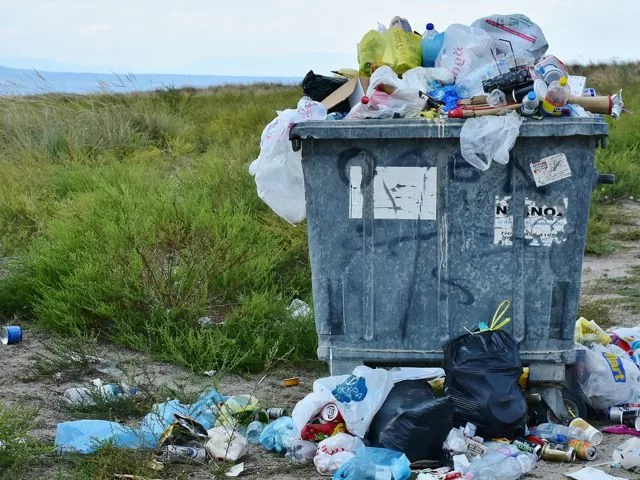6 The extended use of renewable raw materials for non-food applications
Renewable raw materials, as it was seen, are viable alternatives to petrochemical products in many areas if intelligent use is made of their special functional properties such as bio-compatibility, potential biodegradability, non-toxicity and a favourable CO2 balance. However, renewable raw materials are not per se sustainable. Issues such as competition with food, land use and biodiversity continue to play an important part in the debate about renewable raw materials. Renewable raw materials can contribute to sustainable development by reducing CO2 emissions and replacing fossil raw materials. Several attempts were made to quantify the nonfood use of renewable raw materials (RRM). Estimates published in 2008 [5] resulted in a share of 8% renewables used in 2003 in Europe (EU-25) for industrial applications (Table 1).
| Table 1 | ||
| Raw Materials 2003 | Volume in 1000 t | Share in % |
| Total | 80,400 | 100 |
| Renewable | 6,400 | 8 |
| Fossil | 74,000 | 92 |
A more detailed study published in 2014 [6] analysed the biobased raw material use of the European chemical industry (EU-28) in 2011 to about 9% (Table 2).
| Table 2 | ||
| Raw Materials 2011 | Volume in 1000 t | Share in % |
| Total | 90,300 | 100 |
| Renewable | 8,600 | 9 |
| Fossil | 81,700 | 91 |
More specifically, 8.6mn t of RRM and 81.7mn t of fossil raw materials were used. Half of these RRM is composed of plant oils & fat, followed by carbohydrates, i.e. starch, sugar, and cellulose (Table 3).
| Table 3 | ||
| Renewable Raw Materials 2011 | Volume in 1000 t | Share in % |
| Total | 8,560 | 100 |
| Vegetable oil and animal fat | 2,070 | 24 |
| Bioethanol | 1,590 | 19 |
| Starch and Sugar | 1,560 | 18 |
| Natural Rubber | 1,240 | 14 |
| Chemical Pulp | 890 | 10 |
| Glycerol | 470 | 5 |
| Others (1) | 740 | 9 |
- Vegetable waxes, natural resins, tanning agents, proteins, medicinal plants
The bio-based products market covers a broad range of intermediate products, product components, and ready-made products, e.g. bio-based plastics, bio-lubricants, bio-fibres for textiles, composite materials for construction and automotive, chemical and pharmaceutical building blocks, organic acids, amino acids, and enzymes. Worldwide sales of products made by biotechnological processes are estimate at 15% of total chemical sales [7].
Although products from cellulose and starch were once the leaders in many areas such as the packaging or textiles sector, they have been gradually replaced by petrochemical products custom-made for the respective application. The rediscovery of renewable raw materials must be seen in the light of an established product structure in the individual areas of technical applications. The requirements on machine running properties and product handling have since increased immensely so that now newly developed agricultural-based products must meet considerably higher standards with respect to their functional properties in order to replace petrochemical products.
7 Sustainable production – the way forward
The sustainable objective in processing mainly aims for a complete utilisation of biomass by using all plant constituents. Starch production is energy-consuming but non-polluting due to the rigorous use of closed systems, in the ‘closed loop’ economy model. Research and development efforts focus on improving efficiency, optimising the processing methods and developing new enzyme systems, sustainable catalytic synthesis routes as well as novel products. In this respect, industrial biotechnology is a key technology for an efficient conversion of biomass, alongside classic catalysis. In many fields, more time and continued investment is required to achieve economic viability through a high optimisation level of existing processes as well as applying new technology to this situation. Innovation is a prerequisite and, at the same time, the major driver for a broader use of renewable raw materials. Unlike in the early days of promotion for renewables, as it was noted, the focus is no longer on generating sales opportunities for surplus biomass. Now the challenge is to use biomass – which is available only within limitations – as efficiently as possible. In this setting, the use as food and feedstuff has always priority [8].
8 R&D requirements for the future
Further research and development efforts are required to open up new fields of application for the material use of renewables in the chemical industry, i.e.
- Further improved separation and purification techniques in the agroindustry through the use of liquid chromatography and membranes like those used for ultra-, micro- and nanofiltration.
- New modification techniques in simple, e.g. aqueous systems using biotransformation and chemoenzymatic methods to introduce interesting functionality.
In terms of product development the most important market segments to be served include polymers & fibres, pharmaceutical ingredients, cosmetics, organic chemicals, and detergents.
9 Conclusion
Governments and scientific communities throughout the world now widely recognise that the practice of green chemistry and its engineering not only leads to a cleaner and more sustainable earth, but also can be economically advantageous, with many positive social impacts. The industries that contribute to the supply of such materials have an increasing range of opportunities to develop products that match the clearly growing consumer demand. How non-food products are produced, their sources and processing of themselves become information in the readily accessible public domain which retailers use for market advantage and significantly impact success of sale. Put simply this means that the ‘story’ of a product is as important as the product. Going forward the final product producers, our industries’ direct customers have expectations of constantly improving functionality, seek diversity of application and flexibility to tailor to customer needs. Rising to that challenge presents opportunities on a scale it was not seen for many years and is one that must be grasped readily.
References
- Lloyd, D.R.J.; Radeloff, M.A. (2015): Developing the essential food ingredients for the future. Sugar Industry/Zuckerind.
- Radeloff, M.A.; Beck, R.H.F. (2016): “Clean label” – Starches and their functional diversity. Sugar Industry/Zuckerind.
- adeloff, M.A.; Beck, R.H.F. (2013): Polyols – more than sweeteners. Sugar Industry/Zuckerind.
- Röper, H. (2002): Renewable raw materials in europe – Industrial utilisation of starch and sugar. Starch/Stärke
- Jering, A.; Günther, J.; Raschka, A.; Carus, M.; Piotrowski, S.; Scholz, L. (2010): Use of renewable raw materials with special emphasis on chemical industry. European Topic Centre on Sustainable Consumption and Production
- Benzing, T.; Mosquera, J. (2014): Measuring bio-based raw materials use in the chemical industry. Federation of German Chemical Industries (VCI)
- Festel, G. (2009): Market forecasts and investment opportunities for industrial biotechnology. European Forum for Industrial Biotechnology, Lisbon
- Carus, M. (2010): A new assessment of the material use of renewable raw materials. nova-Institut (Editor)


